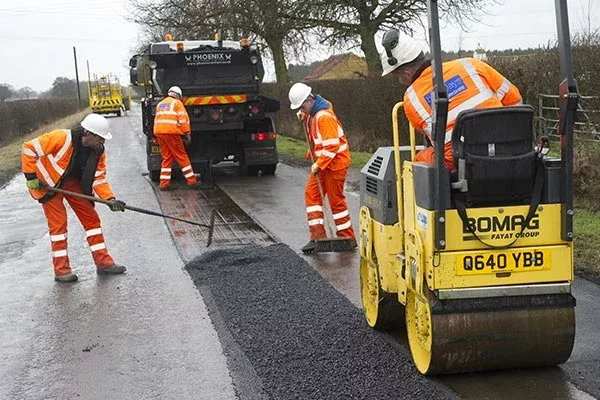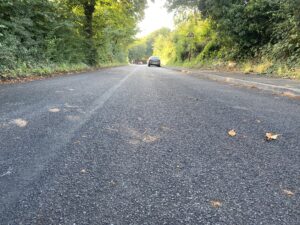Just 3% of England’s 183,054-mile council-run road network received any form of road maintenance in the last 2023/24 financial year, new government data analysed by the RAC shows.
In total, 4,894 miles of all road types were strengthened, resurfaced or preserved in 2023/24, representing an 18% increase (750 miles) in maintenance work compared to the year before (2022/23) when 4,144 miles of roads were improved.
However, the situation is far bleaker now than in 2017/18 when 7,510 miles of roads were maintained – 2,616 more miles than in 2023/24 (4,894 miles), representing a 35% decline.
Looking at the proportion of A roads that received any form of maintenance, just 5% were strengthened, resurfaced or preserved in the last financial year. This accounts for 817 of the country’s 17,860 miles of A roads, down by a third (33%) from the 1,222 maintained six years before. The percentage of minor roads is even smaller – just 2% (4,080 miles) of the 165,195 miles of minor roads in England were strengthened, resurfaced or given life-extending preservation treatment in the last 2023/24 financial year.
Preventative maintenance
Half (50% – 76) of England’s 152 councils did not complete any vital preservation work to prevent potholes forming on major A roads in 2023/2024.
Preventative treatments, such as preservation, rejuvenation, surface dressing and micro surfacing, stop cracking and seal roads from the damaging ingress of water, helping to avoid the need for more costly resurfacing. More than a third (36% – 54) of authorities failed to complete any work of this kind on B, C and unclassified roads – a considerably smaller proportion than six years ago when only 28% of authorities (43) didn’t use preventative treatments on these routes.
However, among the councils that did carry out preservation work, the data shows a 23% increase in the number of miles treated – 3,309 miles in 2023/24, compared to just 2,698 the year before. Most of this increase was driven by more preservation treatments being used on minor roads (up 26%, vs just 4% more on A roads compared to 2022/23).
Resurfacing
Eleven per cent of councils (16 authorities) didn’t resurface any A roads in 2023/24, while 7% (10 authorities) failed to resurface any minor roads. In total, councils in England resurfaced 1,242 miles of their entire road networks, a 2% increase on the 1,223 the year before.
Regional resurfacing and preservation work
Regionally, Gloucestershire County Council knocked Kent off the top spot for the highest number of resurfaced miles on A roads: 24 miles of its 337 mile-network (7%), double the amount (12 miles) it completed last year. For the second year in a row, Staffordshire completed the greatest amount of preservation work – 9%, equating to 37 of its 411 miles of A roads – exactly the same proportion as last year.
In the South East, Surrey took the title for the most minor roads resurfaced by replacing 50 miles of its 2,958-mile network (only 2%). For two years running, Norfolk carried out the most preservation work treating 5% of its 5,586 B, C and U roads, equating to 302 miles.
RAC head of policy Simon Williams said:
“It’s good to see an increase in the amount of road maintenance being carried out by councils from the previous financial year, but that’s hardly great progress given the 2022/23 figure was a five-year low.
“And it remains the case that still only a slither of England’s total road network is getting any maintenance attention whatsoever. This reinforces our belief that most councils are in a cycle of merely filling potholes, rather than looking after their roads properly.
“The bigger picture is far more concerning because it still shows a significant decline in the proportion of our roads strengthened, resurfaced or preserved compared to six years ago.
“As the Government has just given councils a record amount of funding to look after their roads, we hope to see a significant improvement in the quality of road surfaces due to the extra maintenance they will be able to carry out in the next 12 months.
“We encourage local authorities to focus on permanent solutions rather than trying to patch pothole-ridden roads that are beyond saving. This might include resurfacing or alternatives such as recycling existing materials in-situ. Surface dressing roads in better condition is also important as it ensures they stay that way for longer.”






















